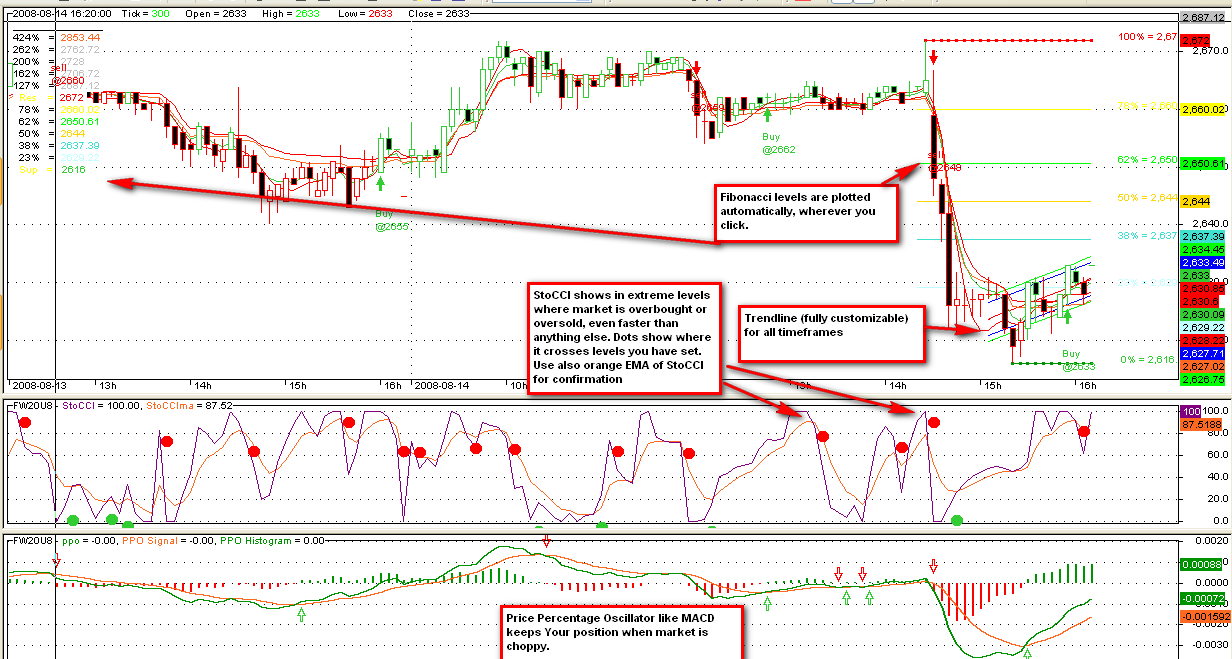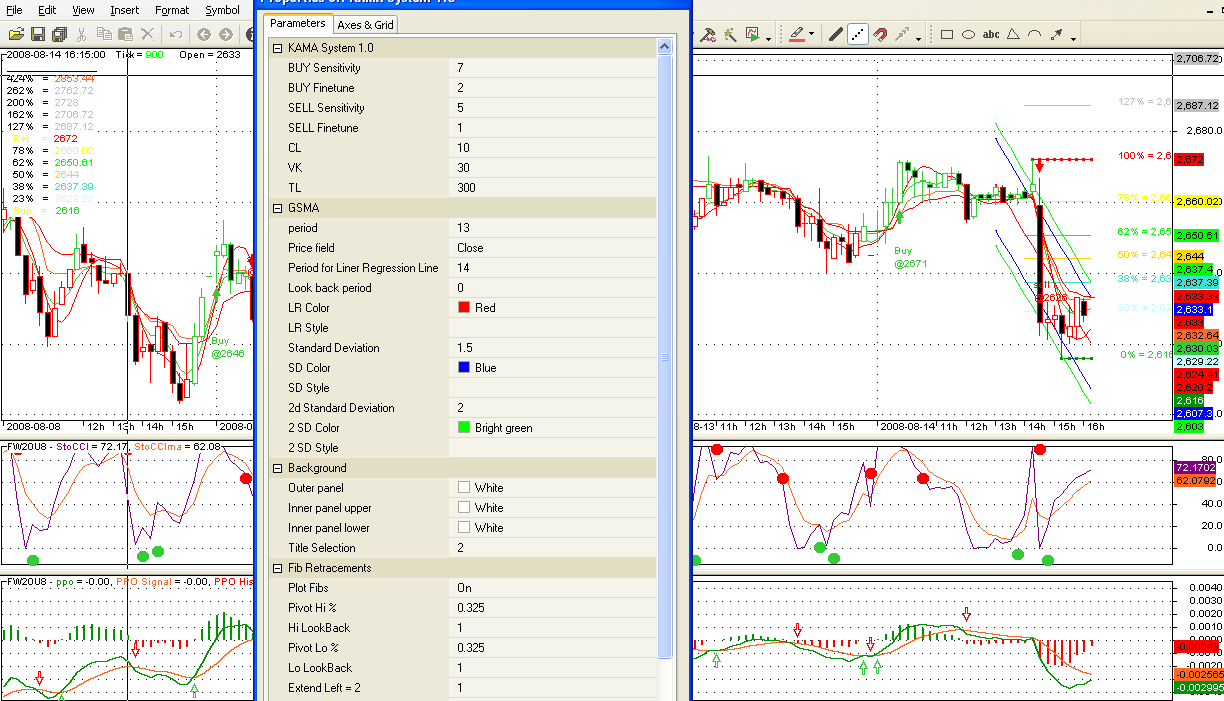How to read stock chartsReading charts is an art that can take years to fully master. Why do we read charts? Because, by reading charts, we can determine what the SMART MONEY (SM) is doing!
You have to be able to analyze a chart and come to a conclusion about whether or not to risk your hard earned money on a trade.
That is the real objective of chart reading.
And this is what separates the novice trader from the professional. There are several factors on a chart that make it worthy of trading. By analyzing these factors, we can determine with high/moderate probability which direction a stock will move.
When you look at a chart, you may to ask yourself some questions like:
What stage is this stock in?
Is this stock in and uptrend or a downtrend?
Is the stock at the beginning, middle, or end of the trend?
How strong is the trend?
Where are the trend lines?
What wave is this stock in?
What do the moving averages tell me?
Are there any chart patterns?


- chart reading.png (18.35 KiB) Viewed 510 times
Are there wide range candles in the direction of the trend?
Are professionals selling or buying?
Where are the support and resistance line/areas?
Is this stock at a Fibonacci level?
What does volume tell me?
I know it seems like a lot of information to try and keep track of but all of the above questions are essential to chart reading.
Ok, now let's go through the list one by one to make sure that you know how to answer the questions correctly. Don't worry, with practice, you will not even need to think about these things. It will become automatic.
You will be able to read charts with lightning fast speed. In just a couple of seconds you will be able to glance at a chart and know all the answers to the questions above.
We don't have to be scientists to read charts. You only need to have a pair of trained eye to visualize the behind the monitor activities.
And how do you train your eyes ?
Nothing is free in this world. Like any other things in your life, it will cost you something. To be a good chart reader, - to have a trained eye - you need to devote and concentrate more - - - - by looking at and observing the charts.
When you look at the simple few symbols of the chart- you will have also have to visualize the drama behind the curtain. It is easier than the conventional afls or complicated diagrams, if you can visualize.
It is faster, easier and philosophically far more confidence creating - if you can read the chart. Not too many symbols you will be needing to deal with. These symbol hint many back door actions. You are a SIGN READER !
As a SIGN READER, when you will see the image of a day, you will visialize like a celluloid. When you look at the past images in the various time frames ( strating from day chart to perhaps three year chart ... just few snap shots..... like a bangla movie goer

, you will also be able to tell what is gonna happen next.
Trained eye can read that !
In BD it is easier because the variables are less here.
But before everything, we must know the basic rules od price actions. We must have the basic wall papers imbedded in our mind about why price varies. What are the conditions for which money moves. Interested members may Google through; some might be shocked to see that 80 % of world money is being moved by 6 families of the world ? How these families are controlling USA ? We will not discuss those, but an educated traders should know that certain conditions are required to be fulfilled for money to be moved. Remember that, money is something - that is hard earned. It is a serious business.
As stock market is faster and associated with risk, with very high dividends - anyone / company / enterprise with high liquidity get involved with stock exchanges, all over the world. On the other side are the retailers with shallow idea about what is happening behind the screen. They just try to reap benefit from the big deals - deals unknown to them. Most of the times, they get caught during the 2nd or 3rd day of the Euphoria stage. Statistically it can be shown that in stock game, the number of losers are above five times than the rest 20 %. In longer time frame, the figure comes down as low as 10 %.
So a common psychology always works on the retailers that " porer bar deikhaa nimmuu" kinda. Most misses the train. Some looks away from a stock, kokhono obhimaan kore, kokhono ghrina kore. So there are bulls and bears. A chart reader therefore needs to see what they are ACTUALLY doing. And what our SM planning to do.
A simple candle tells us about so many possibilities. Let us take one arbitrary chart. I am uploading it now. We will look at a candle.
Lets have a look at the lowest candle, that is in red.
t1.png
In it self, its a candle with only one tail or shadow. We will come back to the candle tail matter, later. The poor red candle looks like the lowest one in the year. It had suffered a great fall. But that was the day, the cleverest ones brought at the cheapest rate.
But what if this candle is not so prominent in bigger time frame. Have a look at the weekly chart.
t-2.png
does it look scary ? Think yourself standing on the last green brick. So this company is maintaining a (loose) range roundness.
So, if you are at the green brick, will you be a bull, or a bear ?
Look at the charts again. Notice the difference and similarities between the top ones, that is the Bollinger Band movement and the squeeze.


- small banks 3 may.png (37.67 KiB) Viewed 444 times


- big banks 3 may.png (37.76 KiB) Viewed 448 times
Don't you think, that the squeeze percentage is more for the Big Banks ? Notice that during the first week of April, the squeeze was tightened. What does that mean ? It means that from the begining of April, the daily close price of the big banks came closer and closer towards the average closing price of last 20 days. That signifies that the volatility had reduced in comparision to the mean volatility. Tarmane holou, abnormality. Je bachhata .. parle sarata bikel khelto, she ekhon math'er pashe dariyei khela dekhte beshi like kore. This is not normal for that child.
Child er ashukh hote pare .. ba koto kisui hote pare .. but a stock is powerful entity, that vibrates always. Price is something, that can not remain static. The various factors always ignites it, so that it changes its value. And therefore, the natural tendency of a stock is to move towards its mean level of volatility. A seasoned chart reader therefore would also look for the historical volatility level for that particular stock. That will give a rough idea about how much squeeze it may play on the stock. But it does not mean that a stock must have to attain that level to have a break out. Many stocks will breakout before that level. Therefore, with only BB, you really can't feel when the actual breakout is going to occur. The squeeze only gives out a strong signal that a period of increased volatity ( not price rise - it may go down too, or may start flauctating betwenn two levels instead of climbing up only) is ahead. So the long term investors start investing.
A chart reader is not so helpless. He selects some low priced OVERSOLD (
http://www.sharemarketbasics.com/Terms/Oversold.php), check their BB squeeze. He sort out the bests in term of Squeeze as well as the OVERSOLD condition.
Now he may like to use, the most abundantly available information as his tool. One is the price and the other is the volume.


- big banks 3 may.png (37.76 KiB) Viewed 448 times
Indivual stock's behaviour is little different than a whole sector, so we will switch over to any arbitrary stock for learning purpoeses. We will try to see how does the chartist use his tools to find out the nearness of a breakout ?
But, still as a point of interest, let us have a last look at the big bank's chart for the last time. Just notice that, during 1,2,3, and 4 gradually lower volume support was required to push it back inside the band. That is indicative of requirement of lower force requirement. Immediately after the fourth push back, the volume started increasing, you will notice bigger diffrence in the opening and closing prices.


- vola bog banks.png (65.48 KiB) Viewed 442 times
The BB should have been started spreading, but it didn't. It did not because it counts the mean from 20 days back. Even ffter passing about 50 % of Bollinger time period, the BB remained static, but the price crossed the band and eventually, (5), you see that a red hand pushed it downwards. The next day, taht was on 3rd May, it played with higher volume, but remained inside the band. However, notice the moderate price gap between the last two days. So these varitaions (flactuations), will add up and effect in the spread of the BB.
Tomorrow, we will see an Individual stock and see, how Bollinger Band is viewed from the Volume price actions.







